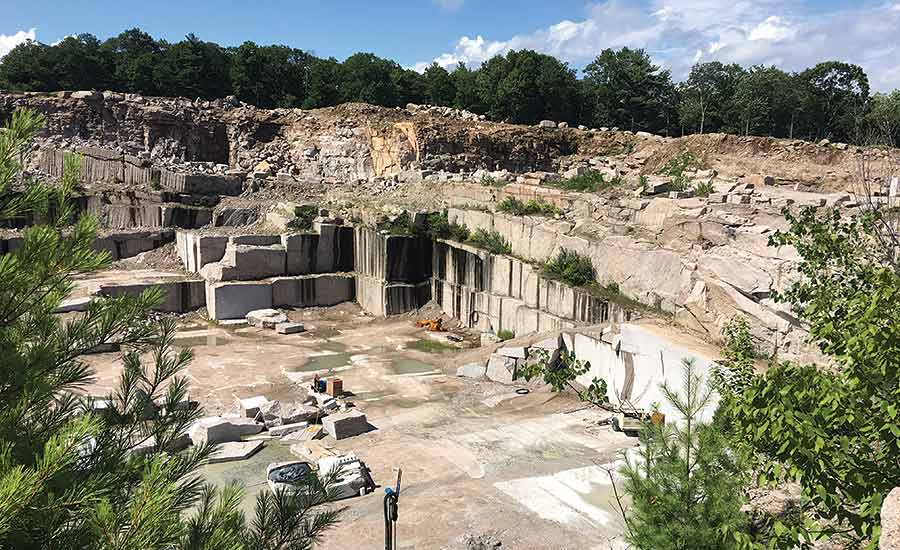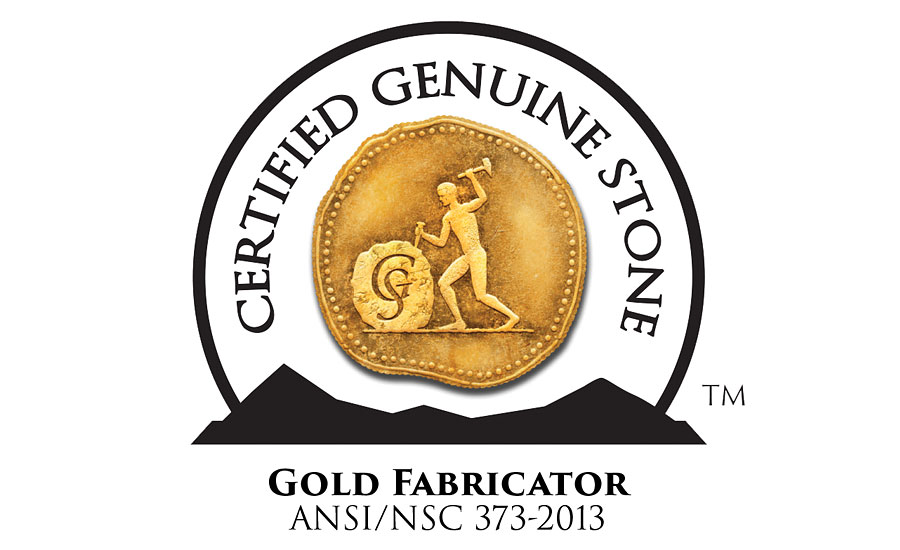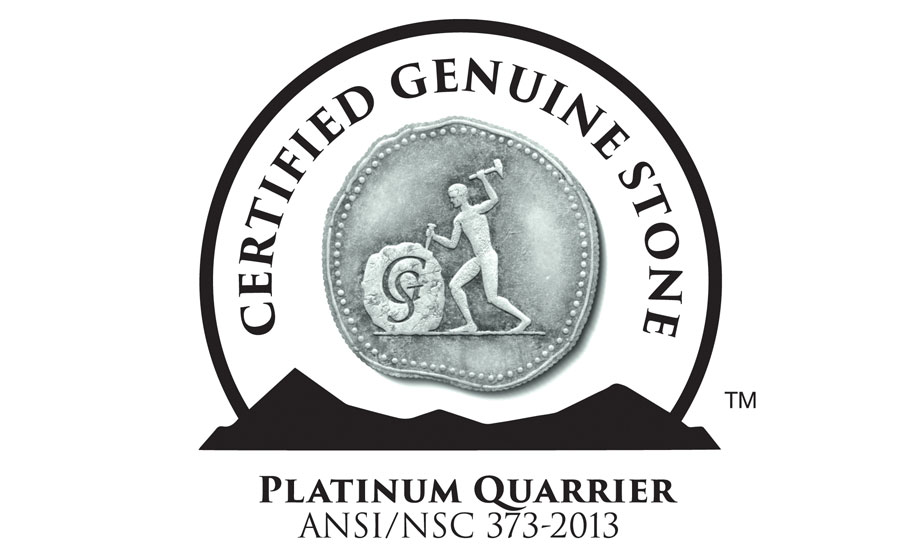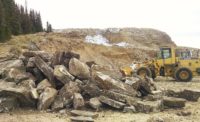Stephanie Vierra has developed, managed and taught programs that support an interdisciplinary and integrated approach to a variety of topics. She is the president and owner of Vierra Design & Education Services, LLC, specializing in research, project management, and educational programs on sustainability and whole building design. She is a LEED-Accredited Professional with the U.S. Green Building Council (USGBC) and a member of The American Institute of Architects. Stephanie has been developing education and outreach programs on sustainability for the natural stone industry (Veronafiere, Natural Stone Council, Marble Institute of America, Building Stone Institute, etc.) since 2006 and has taught and lectured in the U.S. and abroad.
CSTD: What are some of the benefits of using natural stone for LEED certification?
SV: Natural stone has many of the qualities and characteristics that support green building design. Natural stone is very durable, has low maintenance, does not off-gas and also can be water-resistant, reflective and nonporous, depending on the stone, and so much more. These qualities are essential for creating a building or landscape that will last, as well as one that will be healthy inside and out. Stone is also readily available from many sources and can be combined easily with other materials and support any building type or style. The benefits of LEED-certified buildings are that they perform better and are healthier than traditional buildings. They also save energy, water, resources, generate less waste and support human health. LEED buildings create long-term value and attract tenants, cost less to operate, and boost employee productivity and retention. Natural stone can help make a big contribution to all of those issues on its own or as part of a larger set of strategies that includes other materials, too.
CSTD: How are some ways you have worked with businesses, quarries, architecture firms, etc., to help “green” their business?
SV: Businesses should take an all-encompassing approach to how they green their office and business practices, and conduct their operations. I tend to recommend starting with the simplest of strategies such as reducing energy or water use, encouraging recycling and updating technology, all of which make a positive impact on the environment and save money, too. In many cases, these new approaches to a business also lead to new marketing opportunities and new types of projects. But once these initial goals and changes have been made, I suggest that businesses and companies take the next step to do things like upgrade their HVAC and lighting systems, incorporate renewable energy sources, sustainable cleaning practices and sustainable landscape elements.
If a quarry is interested in greening their operations, there is a particular process they must enter into in order to achieve the green certification that is available and approved by the stone industry. The standards, known as “ANSI/NSC 373 Sustainable Production of Natural Dimension Stone” and “Natural Stone Council Chain of Custody, were developed to document and improve the sustainability profile of natural dimension stone production. The standards use a four-tiered rating system (Bronze, Silver, Gold or Platinum), similar to how LEED is structured. This creates a mechanism that differentiates natural dimension stone companies that demonstrate environmental leadership through commitment to sustainable operations and continued innovation. Certification to ANSI/NSC 373 provides architects and owners stone sources for their buildings that are third party verified as being produced in an economic, environmental and socially responsible manner. Project teams and consumers can now clearly recognize which natural stones support these important project goals.
CSTD: In what ways does natural stone help with LEED?
SV: Natural stone can help designers achieve or contribute to several LEED prerequisites and credits in different categories. They are briefly addressed below. For the comprehensive approach to the credit, please visit USGBC.

Integrative Process
The intent of this credit is to maximize opportunities for cost-effective adoption of integrative green design and construction strategies. This is a great opportunity to discuss the reasons you wish to incorporate stone and decide upon potential credits and points that could be achieved with stone. It is important to get the stone supplier, contractors, and installers involved in order to engage them in the process early and make the most effective decisions regarding the type of stones to use and the role they will plan in the green design elements.
Sustainable Sites (SS) Heat Island Reduction: Nonabsorptive Materials
The intent of this credit is to minimize effects on microclimates and human and wildlife habitats by reducing heat islands, which are caused by disturbances to the natural landscape, and temperatures rise as a result. This can cause additional heat on the home and surrounding site, which in turn creates the need for more air conditioning in summer. Installing light-colored, high-albedo natural stone in hardscapes and exterior building elements in order to reduce heat gain on the site will help earn this credit.
Energy and Atmosphere (EA) Annual Energy Use
The intent of this credit is to improve a building’s overall energy performance and reduce its greenhouse gas emissions. Using natural stone, which has excellent thermal properties and does not off-gas, should be a part of the high-performance building envelope, since it will perform well over time, supporting a reduction in energy use, thereby also saving valuable resources.
Materials and Resources (MR)
The intent of this prerequisite is to promote durability and performance of the building enclosure and its components and systems through appropriate design, materials selection and construction practices. Use water-resistant flooring in kitchens, bathrooms, laundry rooms,
spa areas and entryways. Using a durable and water-resistant material like natural stone can also reduce the chance for mold and moisture problems.

MRC1: BUILDING LIFE CYCLE IMPACT REDUCTION
The intent of this credit is to encourage adaptive reuse and optimize the environmental performance of products and materials. Natural stone is naturally recyclable and can contribute to the many options for achieving this credit. Identify sources of existing natural stone to reuse or recycle, whether it is an entire building or stone elements from a building. Identify sources of local labor that specialize in local or recycled stone to ensure that the performance criteria and extended life cycle will be met.
- Option 1- Historic Building Reuse
- Option 2- Renovation of Abandoned or Blighted Building
- Option 3- Building and Material Reuse
Building Product Disclosure & Optimization
CREDIT 2: Environmental Product Declarations (EPD)
The intent of this credit is to encourage the use of products and materials for which life-cycle information is available and that have environmentally, economically and socially preferable life cycle impacts. Project teams are rewarded for selecting products from manufacturers who have verified improved environmental life cycle impacts.
- Option 1- Environmental Product Declaration
- Option 2- Multi-attribute Optimization
CREDIT 3: Sourcing of Raw Materials
The intent of this credit is to encourage the use of products and materials for which life cycle information is available and that have environmentally, economically and socially preferable life cycle impacts. Project teams are rewarded for selecting products verified to have been extracted or sourced in a responsible manner.
- Option 1- Raw Material Source & Extraction Reporting
- Option 2- Leadership Extraction Practices
CREDIT 4: Material Ingredients
The intent of this credit is to encourage the use of products and materials for which life cycle information is available and that have environmentally, economically and socially preferable life cycle impacts. Project teams are rewarded for selecting products for which the chemical ingredients in the product are inventoried using an accepted methodology and for selecting products verified to minimize the use and generation of harmful substances. Raw material manufacturers who produce products verified to have improved life cycle impacts are rewarded as well.
- Option 1- Material Ingredient Reporting
- Option 2- Material Ingredient Optimization
- Option 3- Product Manufacturer Supply Chain Optimization
CREDIT 5: Construction & Demolition Waste Management
The intent of this credit is to reduce construction and demolition waste disposed of in landfills and incineration facilities by recovering, reusing and recycling materials.
- Option 1- Diversion
- Option 2- Reduction of Total Waste Material
Indoor Environmental Quality (EQ) Low-Emitting Products
The intent of this credit is to reduce occupants’ exposure to airborne chemical contaminants through product selection. In the interior of the home, use products that have been tested and found compliant with the California Department of Public Health Standard Method V1.1–2010. At least 90% of a component must meet the requirements to earn credit. As mentioned above, stone does not off-gas, and so should be considered as part of low-emitting product strategies. Remember to coordinate with all the other low-emitting installation materials, such as backings, adhesives and sealants that support the stone design, to ensure the entire system is low-emitting.

Innovation (IN)
The Innovation (IN) credit category encourages project planning and design to improve the coordination and integration of the various elements in a green building. This category also creates an opportunity for projects to earn credit for implementing strategies or measures not addressed in the current LEED rating systems. Good design that goes beyond the requirements can keep costs down and ensure proper integration of green techniques and achievement of project goals. Consider new and innovative uses and approaches to natural stone that could qualify for points in this category.
There is a particular process for achieving a LEED rating. So be sure to check out the resources at USGBC before getting started. No matter the size, location or style of project, you can choose to implement some of these ideas to create a healthy environment and enjoy the benefits of a sustainable building and landscape for many years to come.
CSTD: What are some of the other sustainability programs that natural stone works with, and in what ways?
SV: Any designer who understands the sustainable characteristics and benefits of using natural stone can find many ways to incorporate it into a green project of any building type or size. Natural stone can also be used in any green building rating system. However, the green standards for natural stone are accepted within LEED and the Living Building Challenge. So that is making it easier for architects and designers to know what the requirements are and how to find the right stone and source to meet the requirements. Programs such as Green Globes, Sustainable Sites and certification through the Passive House Institute also have requirements for healthy, durable, sustainably sourced materials. So it’s important to review the various program options to find the best potential for stone to shine in the project and contribute to a healthy building, interior or landscape.
CSTD: What are some additional ways for architects and designers to learn more about natural stone and LEED certification?
SV: Architects, designers, contractors, and even consumers and homeowners can find the sustainability information they need from a variety of professional and reliable sources, including the Natural Stone Institute and the Natural Stone Council. They develop and provide resources on various types of stone, their technical characteristics and their environmental impacts as well as ways to use stone sustainability. Educational courses and guidance are also available to help with the sourcing, design, installation and maintenance of natural stone.
For some additional resources
- ASTM C1549 – 16, Standard Test Method for Determination of Solar Reflectance Near Ambient Temperature Using a Portable Solar Reflectometer
- Energy Star
- Green Globes
- International Well Building Institute
- Leadership in Energy and Environmental Design (LEED)
- Living Building Challenge
- Natural Stone Council: Stone and Sustainability
- Natural Stone Institute
- Net Zero Energy Building (NZEB)
- Passive House Institute U.S.
- Standard Method for the Testing and Evaluation of Volatile Organic Chemical Emissions From Indoor Sources Using Environmental Chambers Version 1.1
- Sustainable Sites Initiative
- Use Natural Stone website
- U.S. Green Building Council




